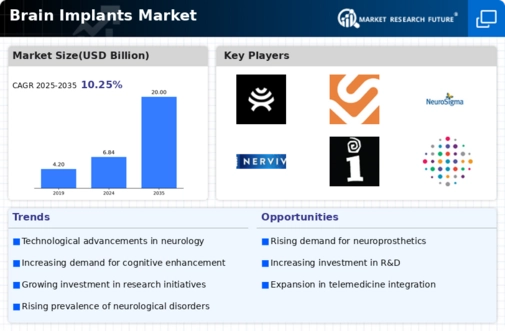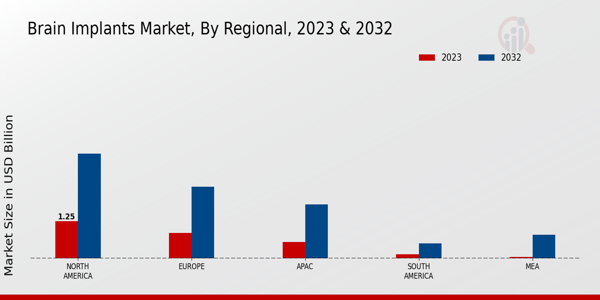Market Share
Brain Implants Market Share Analysis
Severe injuries to the brain can lead to a condition known as post-traumatic epilepsy (PTE) and post-traumatic seizures (PTS). According to the Brain Injury Association of Michigan, about 40% of epilepsy cases are linked to brain injuries, making it one of the most common causes. Often, these injuries occur due to road accidents, especially among young people. Developed countries are experiencing an increase in road accidents, resulting in significant injuries, particularly to the head and brain, which can subsequently lead to epilepsy.
The youth population is particularly vulnerable to head and brain injuries from road accidents, contributing to the growing number of epilepsy cases. Headway, the brain injury association, reported that in 2017 alone, the UK recorded more than 348,453 cases of acquired brain injuries. This number has been steadily increasing since 2005-06, showing a 10% annual rise. The surge in brain injuries is a key factor fueling the expansion of the epilepsy market in the coming years.
The market for epilepsy treatment is anticipated to experience substantial growth due to the increasing prevalence of neurological disorders such as Parkinson’s, Alzheimer’s, depression, and essential tremors. Alzheimer's Research UK revealed that in 2015, over 46.8 million people worldwide were affected by dementia, with projections to reach 50 million by 2017. Additionally, this number was expected to double every 20 years, reaching 75 million by 2030 and a staggering 131.5 million by 2050. A study published by the National Center for Biotechnology Information in 2017 highlighted the rising incidence of seizures in Alzheimer's patients, particularly in the elderly population. The study indicated an 80% chance of Alzheimer's patients developing epilepsy, with the potential for further increases in the future. The high prevalence of neurological disorders, coupled with the growing healthcare expenditure on epilepsy, is propelling the growth of the epilepsy market.
The expansion of the market is not only driven by traumatic brain injuries but also by the increasing burden of neurological conditions on global health. Parkinson’s, Alzheimer’s, and other disorders are becoming more prevalent, necessitating a greater focus on treatment options, including those for epilepsy. The rising number of cases and the associated healthcare costs underscore the need for effective solutions and contribute to the positive outlook for the epilepsy market.
















Leave a Comment